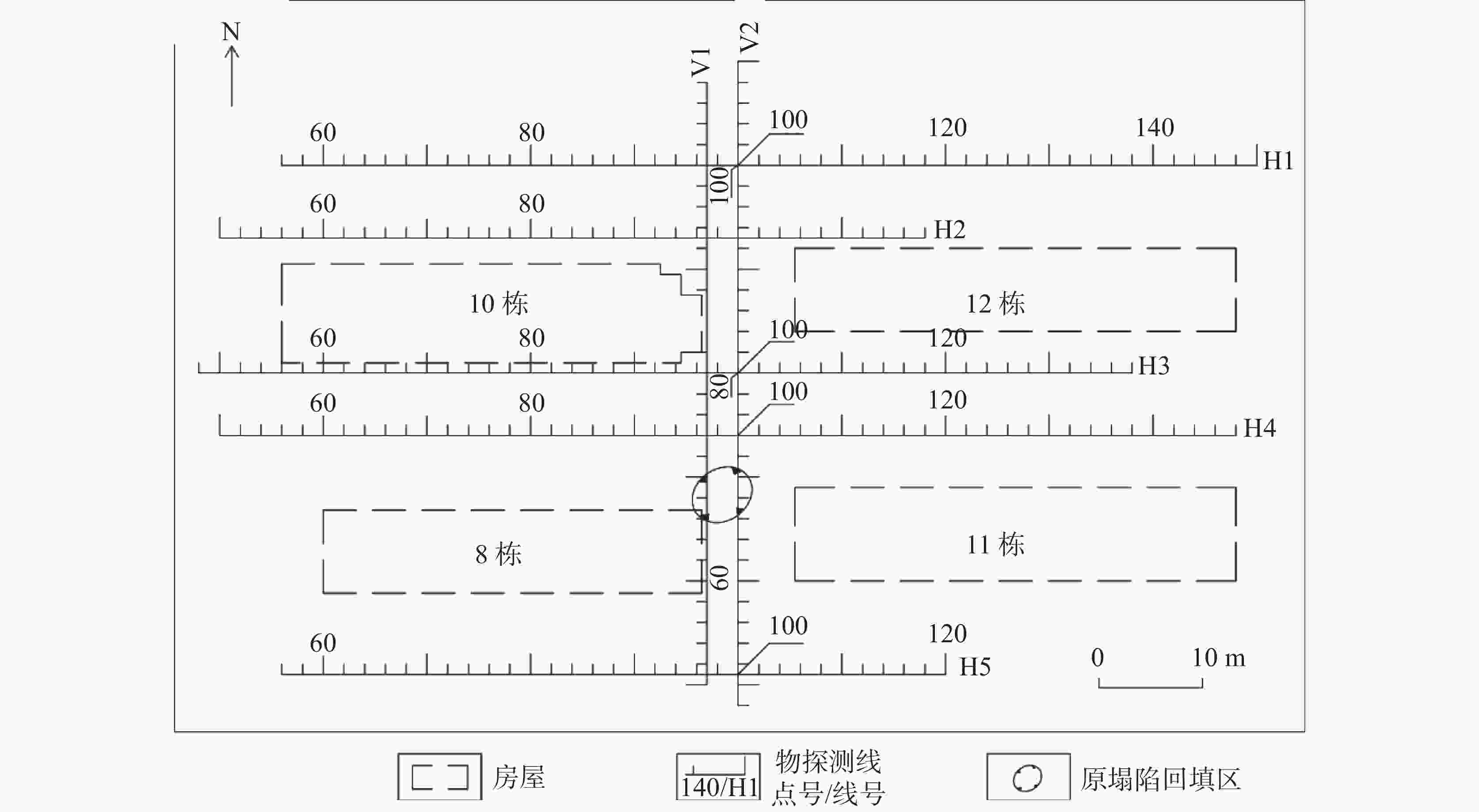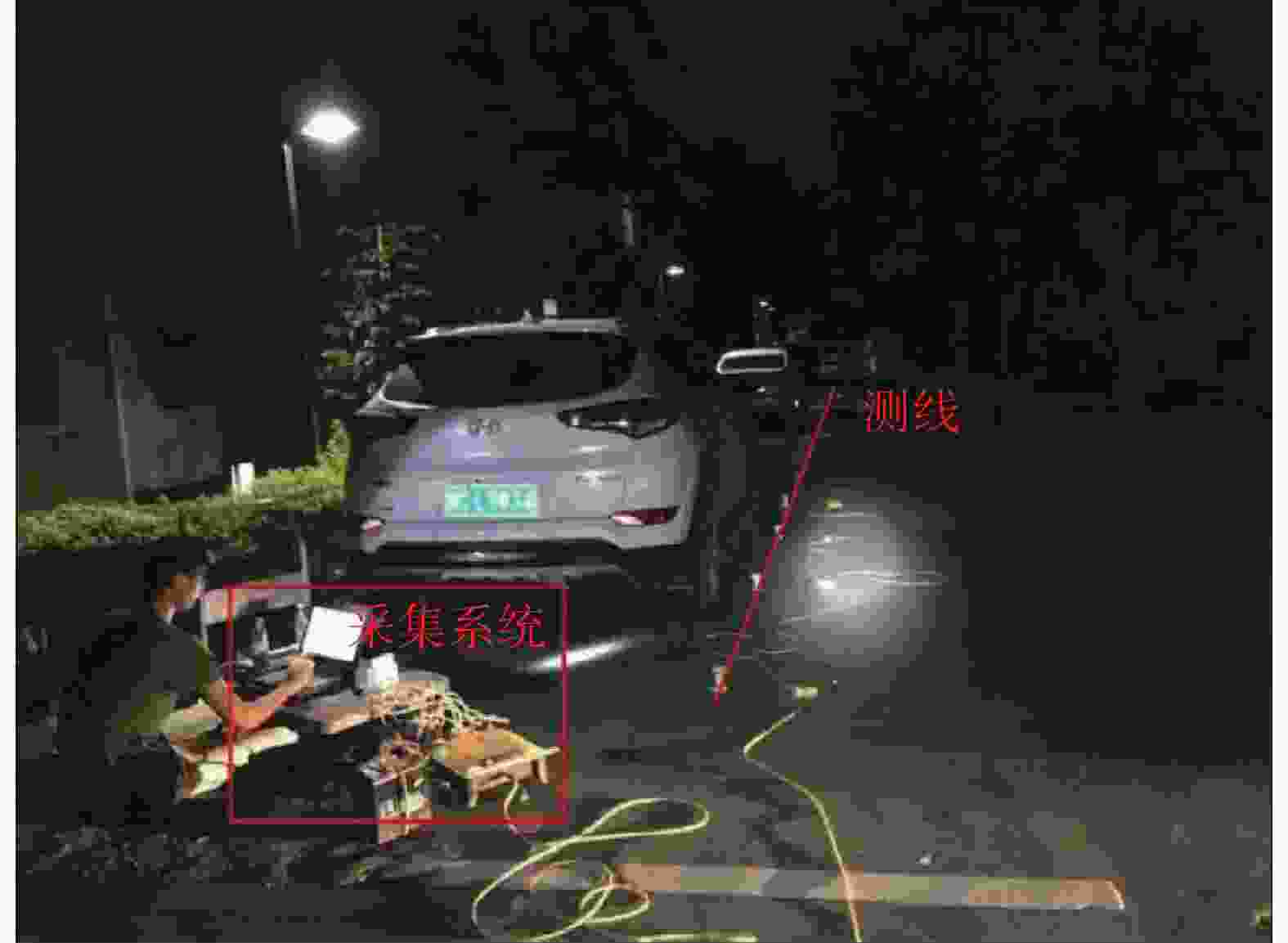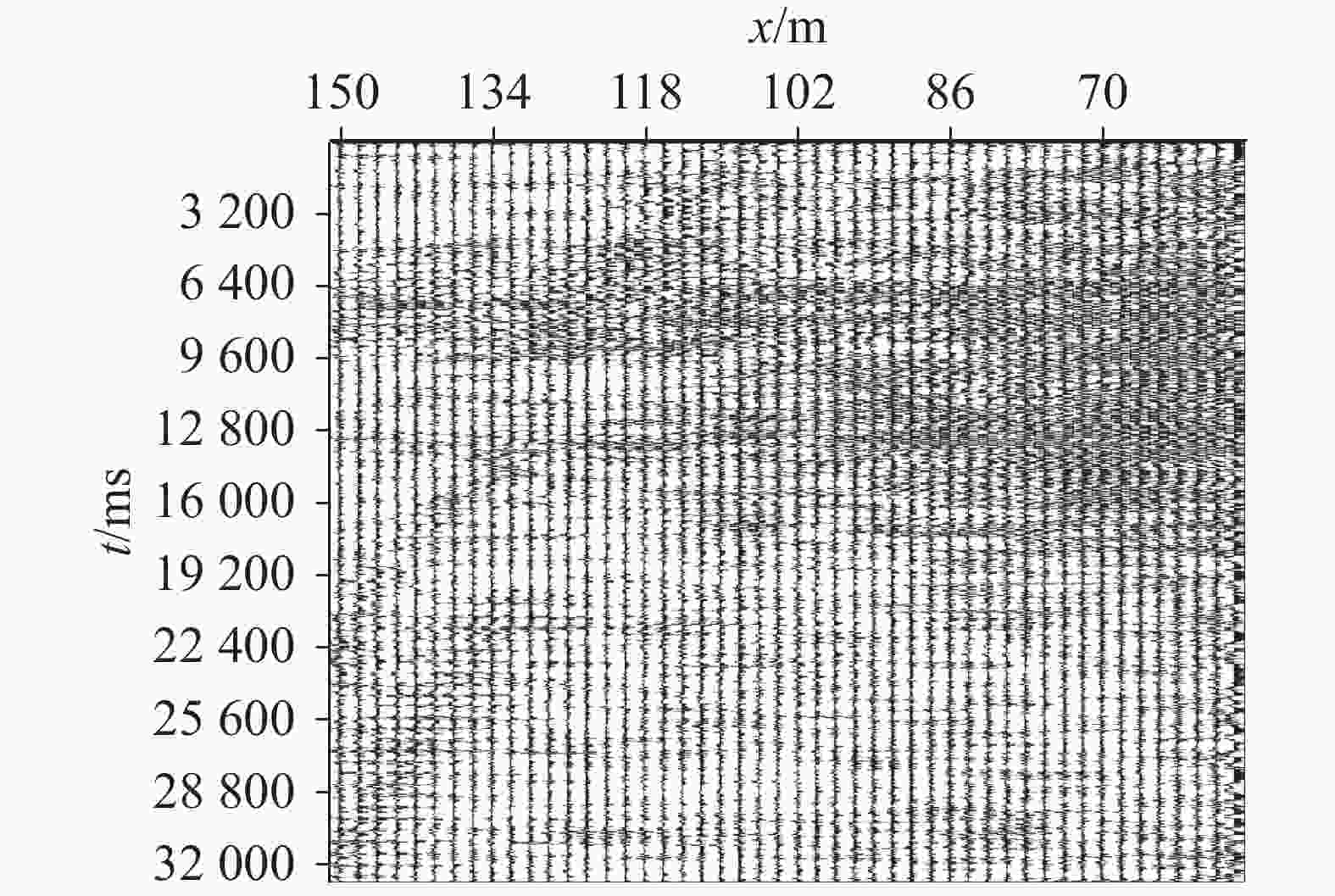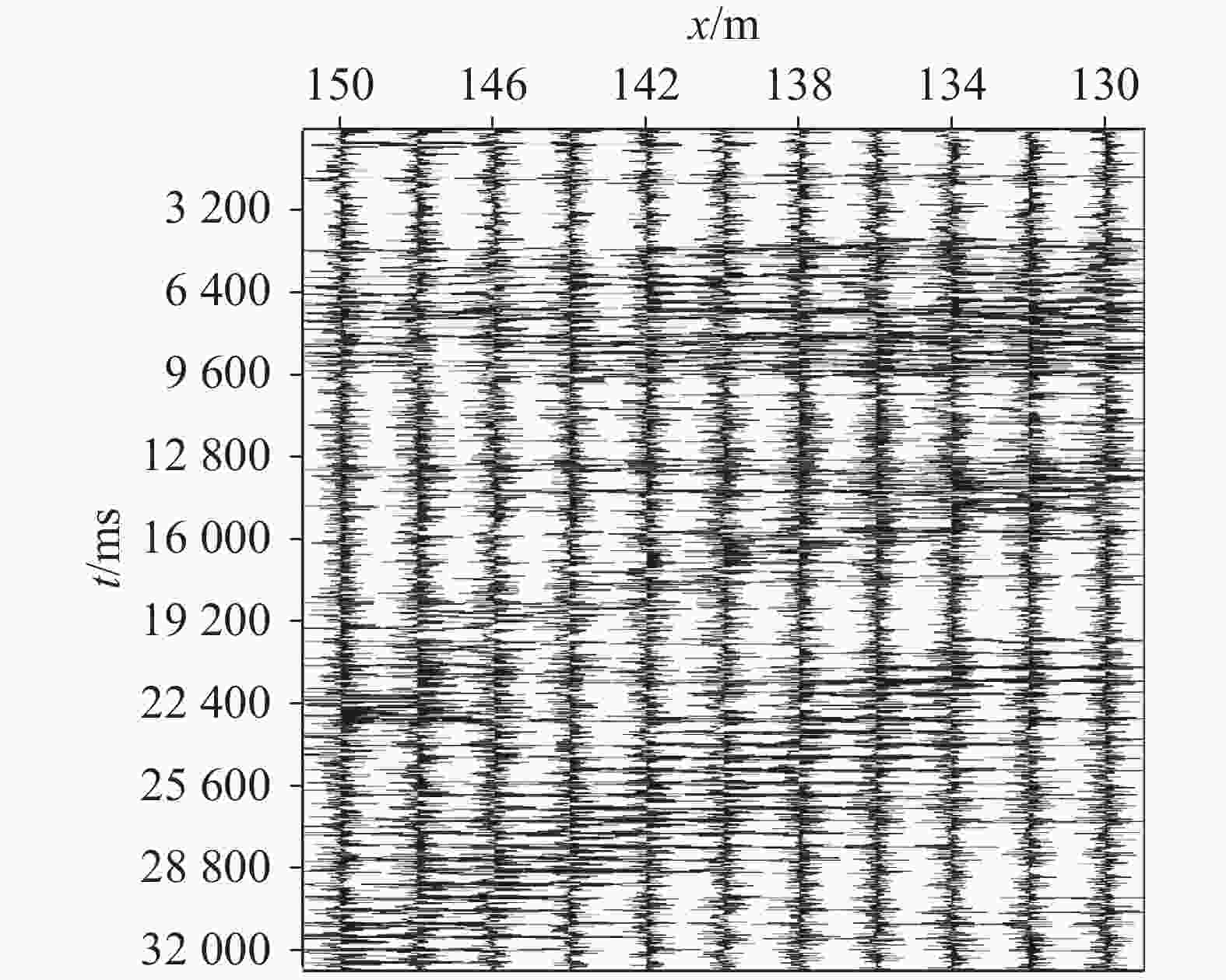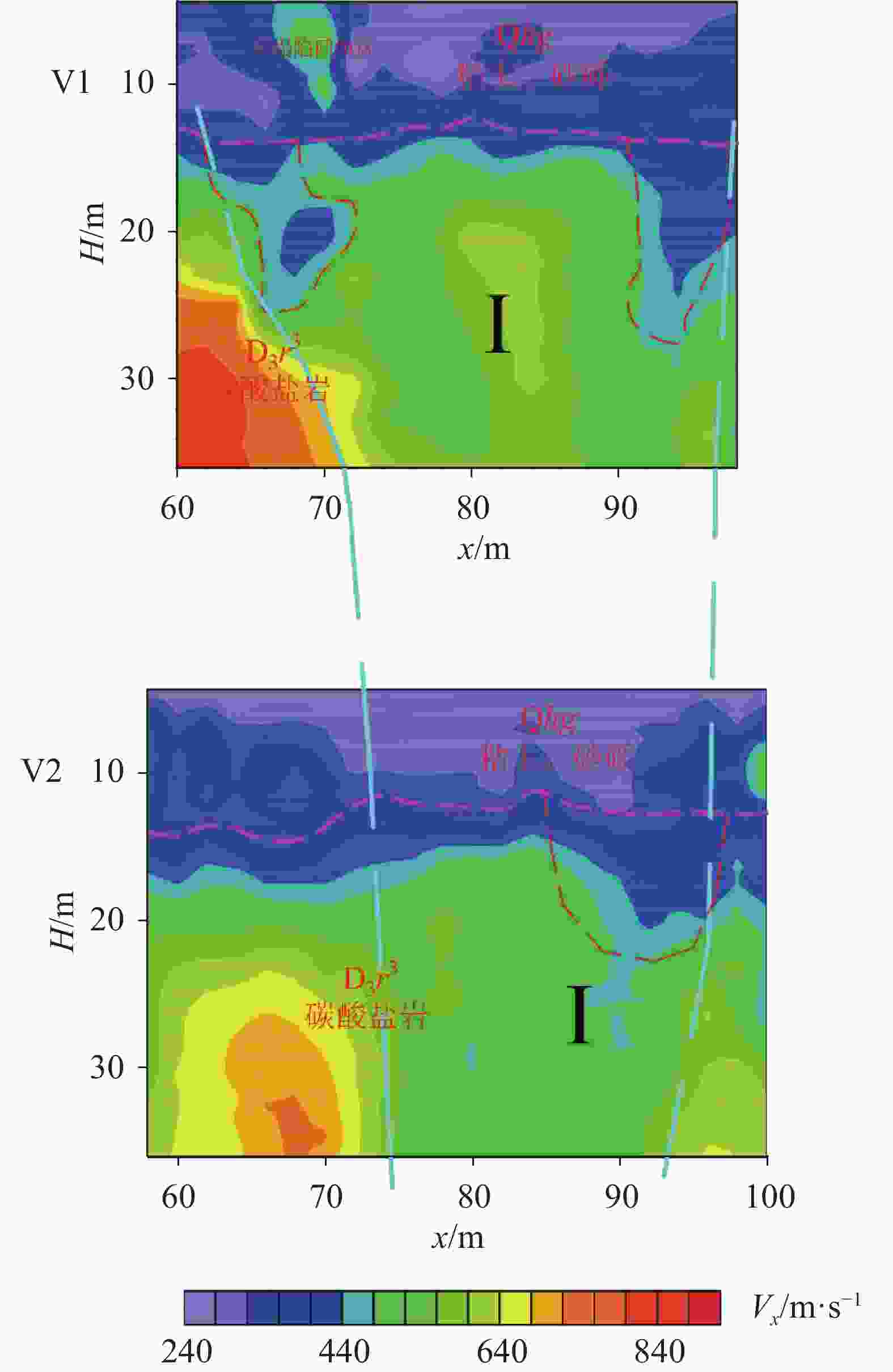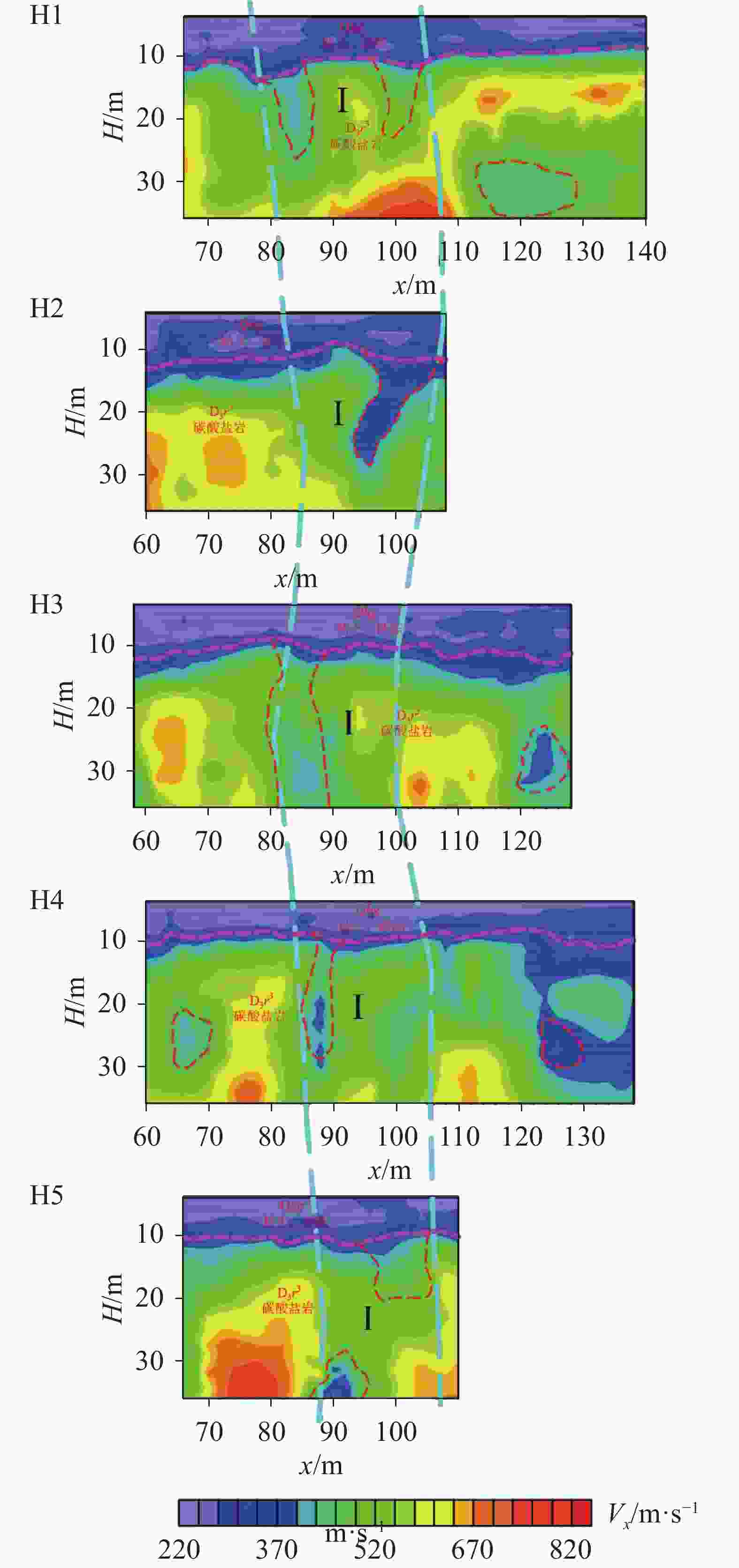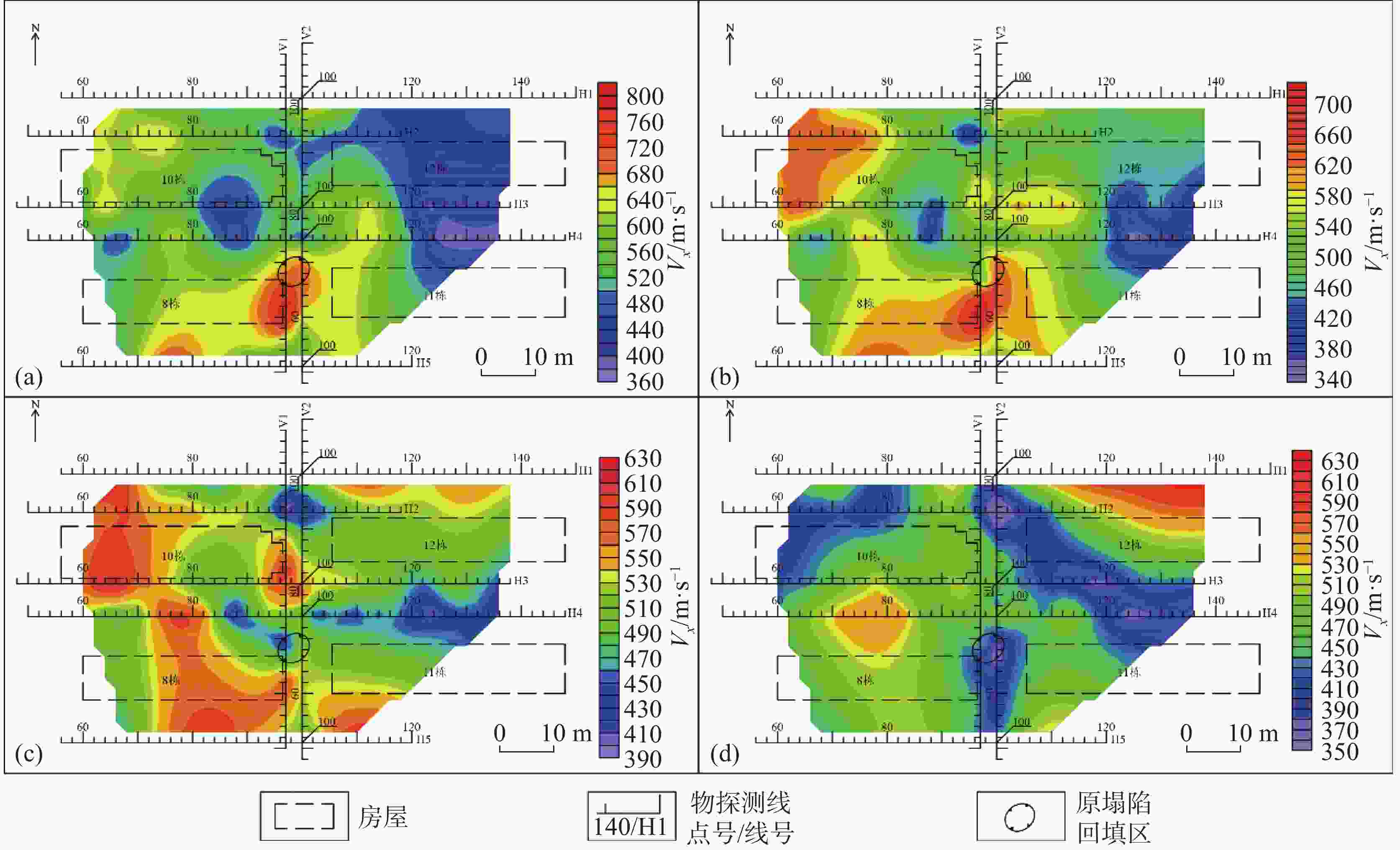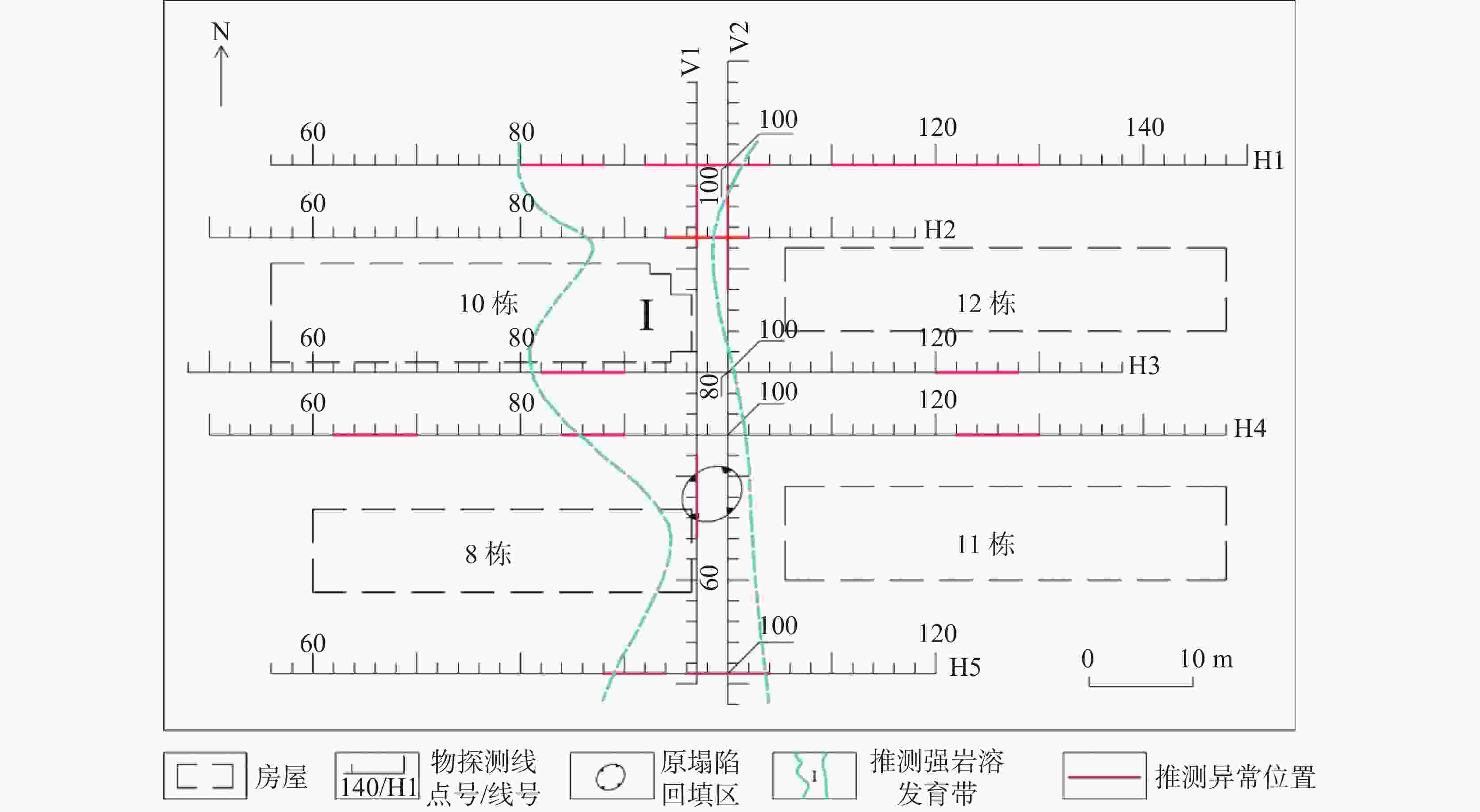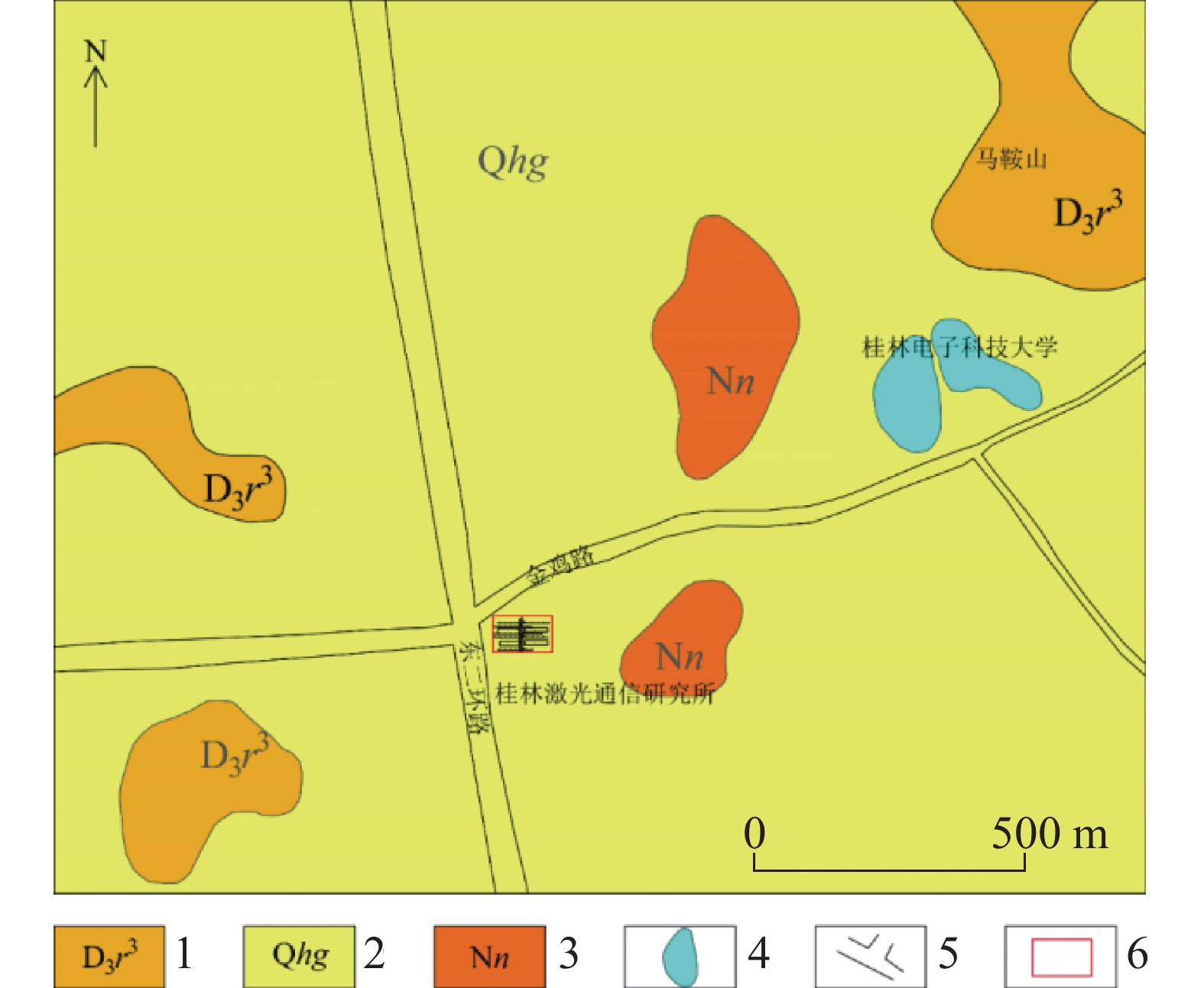Application of the method of passive surface wave to the exploration of urban residential area
-
摘要: 城镇中的人文噪声和工业生产对传统的地球物理调查方法(重、磁、电、震)有极大的干扰限制,鉴于此,文章采用抗干扰能力强、受场地条件影响小的被动源面波法在城市居民区进行地下空间勘探的应用。研究结果表明:(1)被动源面波法在城市地区地下空间勘探中是一种有效的物探方法,其施工排列灵活多变,适应性强且不受外界干扰;(2)根据扩展的空间自相关法(ESPAC)处理得到视横波速度剖面能有效地对地下土洞、岩溶破碎带及溶洞等进行响应;(3)结合多条网状测线剖面结果,绘制不同深度的视横波速度水平切片图能有效对地下空间结构进行评价。
-
关键词:
- 被动源面波法 /
- 频散曲线 /
- 扩展的空间自相关法(ESPAC) /
- 视横波速度Vx
Abstract:With the rapid development of cities, people are paying increasing attention to urban ground subsidence and underground space. As a means to directly explore the structure of subsurface media, geophysical methods are increasingly being applied to solve the geophysical and geological problems on shallow surface in urban areas. Due to the various electromagnetic interference produced by the human noise and industrial production in cities, the application of traditional geophysical survey methods (gravity, magnetism, electricity and earthquake) is greatly limited in densely populated urban areas, but the human noise provides an effective source for the method of passive surface wave. The method of passive surface wave has developed rapidly due to its strong anti-interference capacity and little influence by site conditions. Specifically, this method has been used in karst collapse detection, prediction of overburden thickness, detection of velocity structure of underground shear wave, site effect evaluation, geothermal resource exploration, active fault detection, urban geological survey and other fields. Since the study area is located in an urban residential area whose ground had subsided, it is urgent to find out the geological structure of the underground medium. The authors adopt the method of passive surface wave for exploration and application research. The core of this method lies in the extraction of the dispersion curve. There are two most commonly used methods at present. One is the method of frequency-wave number domain (F-K method), and the other is the method of spatial autocorrelation (SPAC method). In this study, the authors mainly adopt the latter, while for irregular arrays, the method of extended spatial autocorrelation (ESPAC) is used. The main exposed strata in this study area lies successively as follows: the overlying clay in light yellow and brick red and gravel in Quaternary Holocene Guiping Formation (Qhg), and the underlying bedrock composed of thick limestone in light gray and gray-white in the upper segment of Devonian Upper Rongxian Formation (D3r3). There is no fault structure developed in the area. The overburden is characterized by low velocity. The complete limestone shows characteristics of obviously high velocity. When there are fissures or even water-filled caves in the limestone, the high velocity will be significantly weakened, which is the geophysical premise for the application of this method. Due to the narrow space and the criss-crossing buildings in the area, the method of linear passive surface wave was adopted in actual data collection. The SUMMIT seismograph of the German DMT company was adopted as the instrument to collect data, and a vertical geophone of 4.5 Hz was used to receive data. One-time layout at intervals of 2 m was completed, and the whole survey line was received at the same time. Each survey line collected 20 or more records, and the sampling time of each record was 32,768 ms with the sampling frequency of 500 Hz. Before indoor processing, the original data were extracted in an orderly manner according to the spread length of 11 traces. The specific processing flow included preprocessing, extraction of dispersion curve, calculation of apparent shear wave velocity and drawing of apparent S-wave velocity profiles. The apparent shear wave velocity Vx is a physical parameter of surface wave different from the phase velocity Vr and the shear wave velocity Vs. It has a velocity dimension. Because it avoids the influence of human factors such as setting the initial model and selecting the inversion results during the inversion process, the apparent shear wave velocity was chosen. In this study, the characteristics of apparent shear wave velocity in the backfilling area for the original subsidence were firstly interpreted and analyzed, and then the characteristics of other survey lines were interpreted. The profiles and the slice diagrams at different depths of the apparent shear wave velocity show that: (1) The thickness of overburden layer in this area ranges from several meters to more than ten meters, and the thickness varies greatly at or near the sudden change in velocity. According to the comparison with the backfill area of original subsidence, the obvious abnormal features indicate that the upper soil layer is disturbed and developed in the solution groove, and karst caves are developed in the deep part, resulting in soil leakage and then ground subsidence. (2) Survey lines reveal that the karst in the bedrock is mostly developed within 30 m, mainly composed of Zone I—a strong karst development zone. Zone I is mainly distributed under and around Building 10 in a residential area, with a wide range and a certain extension direction. It is speculated to be a strong runoff zone with the main trend of north-south direction. (3) The statistical results of apparent shear wave velocity of multiple survey lines show that the apparent shear wave velocity range of the overburden in this study area is 220–380 m·s−1, and the intact limestone is 580–920 m·s−1. However, due to the development of fissures in broken limestone, its range is 390–510 m·s−1, and the apparent shear wave velocity of water-filled cave is relatively lower at the range of 340–430 m·s−1. -
图 1 研究区地质简图
1. 泥盆系上统融县组上段灰岩 2. 第四系全新统桂平组黏土 3. 第三系上统南康组碎屑岩 4. 湖泊 5. 公路 6. 物探测区
Figure 1. Geology of the study area
1. Dolomite of the upper segment of Devonian Upper Rongxian Formation 2. Clay of Quaternary Holocene Guiping Formation 3. Clastic rocks of Upper Tertiary Nankang Formation 4. Lakes 5. Highway 6. Testing zone of geophysical prospecting
表 1 各测线推测的异常位置统计表
Table 1. Inferred abnormal position of each survey line
测线 点号/m 面波测量点号/m 推测异常位置/m H1 56~150 66~140 80~88,98~104,110~130 H2 50~118 60~108 94~102 H3 48~138 58~128 82~90,120~128 H4 50~148 60~140 62~70,84~90,122~130 H5 56~120 66~110 88~94,96~104 V1 50~108 60~98 64~72,92~98 V2 48~110 58~100 88~98 表 2 各测线不同介质的视横波速度统计表
Table 2. Apparent shear wave velocity of different medium for each survey line
测线 覆盖层/m·s−1 破碎灰岩/m·s−1 充水溶洞/m·s−1 完整灰岩/m·s−1 H1 220~380 400~490 370~430 580~850 H2 220~370 390~480 350~400 580~850 H3 220~350 400~480 340~420 580~850 H4 220~360 400~500 350~410 580~850 H5 220~370 400~510 360~420 580~850 V1 240~380 410~480 360~410 600~920 V2 240~360 400~470 370~420 600~920 -
[1] 黄健民, 吕镁娜, 郭宇, 陈小月. 广州金沙洲岩溶地面塌陷地质灾害成因分析[J]. 中国岩溶, 2013, 32(2):167-174.HUANG Jianmin, LV Meina, GUO Yu, CHEN Xiaoyue. Research on the reason for geologic disaster by karst surface collapse at Jinshazhou in Guangzhou[J]. Carsologica Sinica, 2013, 32(2):167-174. [2] Aki K. Space and time spectra of stationary stochastic waves, with special reference to microtremors[J]. Bulletin Earthquake Research Institute, 1957, 35(3):415-456. [3] Okada H, Suto K, Asten M W. The microtremor survey method[M]. Tulsa, USA: Society of Exploration Geophysicists, 2004. [4] Nakamura Y. A method for dynamic characteristics estimation of subsurface using microtremor on the ground surface[J]. Quarterly Report of RTRI, 1989, 30(1):25-33. [5] Louie J N. Faster, better: Shear-wave velocity to 100 meters depth from refraction microtremor arrays[J]. Bulletin of the Seismological Society of America, 2001, 91(2):347-364. doi: 10.1785/0120000098 [6] Park C B, Miller R D. Roadside passive multichannel analysis of surface waves (MASW)[J]. Journal of Environmental & Engineering Geophysics, 2008, 13(1): 1-11. [7] 孙勇军, 徐佩芬, 凌甦群, 李传金. 微动勘查方法及其研究进展[J]. 地球物理学进展, 2009, 24(1):326-334.SUN Yongjun, XU Peifen, LING Suqun, LI Chuanjin. Microtremor survey method and its progress[J]. Progress in Geophysics, 2009, 24(1):326-334. [8] 叶太兰. 微动台阵探测技术及其应用研究[J]. 中国地震, 2004, 20(1):47-52. doi: 10.3969/j.issn.1001-4683.2004.01.005YE Tailan. The exploration technique for microtremor array and its application[J]. Eathquake Research in China, 2004, 20(1):47-52. doi: 10.3969/j.issn.1001-4683.2004.01.005 [9] 丁连靖, 冉伟彦. 天然源面波频率–波数法的应用[J]. 物探与化探, 2005, 29(2): 138-141, 145.DING Lianjing, RAN Weiyan. The application of natural source surface wave frequency-waves method[J]. Geophysical & Geochemical Exploration, 2005, 29(2): 138-141, 145. [10] 赵东. 被动源面波勘探方法与应用[J]. 物探与化探, 2010, 34(6):759-764.ZHAO Dong. Passive surface waves: Methods and applications[J]. Geophysical & Geochemical Exploration, 2010, 34(6):759-764. [11] 刘伟, 甘伏平, 赵伟, 陈玉玲. 高密度电法与微动技术组合在岩溶塌陷分区中的应用分析:以广西来宾吉利塌陷为例[J]. 中国岩溶, 2014, 33(1):118-122.LIU Wei, GAN Fuping, ZHAO Wei, CHEN Yuling. Application analysis of combining high density resistivity and microtremor survey methods in areas of karst collapse: A case study of the collapse in Jili village, Laibin, Guangxi[J]. Carsologica Sinica, 2014, 33(1):118-122. [12] 梁东辉, 甘伏平, 张伟, 韩凯. 微动HVSR法在岩溶区探测地下河管道和溶洞的有效性研究[J]. 中国岩溶, 2020, 39(1):97-102.LIANG Donghui, GAN Fuping, ZHANG Wei, HAN Kai. Study on the effectiveness of the microtremor HVSR method in detecting underground river pipelines and caves in karst areas[J]. Carsologica Sinica, 2020, 39(1):97-102. [13] Liang D H, Gan F P, Zhang W, Jia L. The application of HVSR method in detecting sediment thickness in karst collapse area of Pearl River Delta, China[J]. Environmental Earth Sciences, 2018, 77(6):259. doi: 10.1007/s12665-018-7439-x [14] 张伟, 甘伏平, 梁东辉, 韩凯, 刘伟. 利用微动法快速探测岩溶塌陷区覆盖层厚度研究[J]. 人民长江, 2016, 47(24):51-54.ZHANG Wei, GAN Fuping, LIANG Donghui, HAN Kai, LIU Wei. Application of microtremor exploration in quick inspection of overburden layer thickness in karst collapse area[J]. Yangtze River, 2016, 47(24):51-54. [15] 何正勤, 丁志峰, 贾辉, 叶太兰. 用微动中的面波信息探测地壳浅部的速度结构[J]. 地球物理学报, 2007, 50(2):492-498. doi: 10.3321/j.issn:0001-5733.2007.02.021HE Zhengqing, DING Zhifeng, JIA Hui, YE Tailan. To determine the velocity structure of shallow crust with surface wave information in microtremors[J]. Chinese Journal of Geophysics, 2007, 50(2):492-498. doi: 10.3321/j.issn:0001-5733.2007.02.021 [16] 何正勤, 胡刚, 鲁来玉, 张维, 叶太兰, 沈坤. 云南通海盆地的浅层速度结构[J]. 地球物理学报, 2013, 56(11):3819-3827. doi: 10.6038/cjg20131123HE Zhengqin, HU Gang, LU Laiyu, ZHANG Wei, YE Tailan, SHEN Kun. The shallow velocity structure for the Tonghai basin in Yunnan[J]. Chinese Journal of Geophysics, 2013, 56(11):3819-3827. doi: 10.6038/cjg20131123 [17] 王伟君, 刘澜波, 陈棋福, 张杰. 应用微动H/V谱比法和台阵技术探测场地响应和浅层速度结构[J]. 地球物理学报, 2009, 52(6):1515-1525.WANG Weijun, LIU Lanbo, CHEN Qifu, ZHANG Jie. Applications of microtremor H/V spectral ratio and array techniques in assessing the site effect and near surface velocity structure[J]. Chinese Journal of Geophysics, 2009, 52(6):1515-1525. [18] Foti S, Parolai S, Albarello D, Picozzi M. Application of surface-wave methods for seismic site characterization[J]. Surveys in Geophysics, 2011, 32(6):777-825. [19] Wang C F, Zhang J, Yan L H, Liu H, Zhao D. Application of passive source surface-wave method in site engineering seismic survey[J]. Earthquake Science, 2014, 27(1):101-106. doi: 10.1007/s11589-014-0065-0 [20] Xu P F, Ling S Q, Li C J, Du J G, Zhang D M, XU X Q, Dai K M, Zhang Z H. Mapping deeply-buried geothermal faults using microtremor array analysis[J]. Geophysical Journal International, 2012, 188(1):115-122. doi: 10.1111/j.1365-246X.2011.05266.x [21] 徐佩芬, 李世豪, 杜建国, 凌苏群, 郭慧丽, 田宝卿. 微动探测: 地层分层和隐伏断裂构造探测的新方法[J], 岩石学报, 2013, 29(5): 1841-1845.XU Peifen, LI Shihao, DU Jianguo, LING Suqun, GUO Huili, TIAN Baoqing. Microtermor survey method: A new geophysical method for dividing strata and detecting the buried fault structures[J]. Acta Petrologica Sinica, 2013, 29(5): 1841-1845. [22] 徐佩芬, 侍文, 凌苏群, 郭慧丽, 李志华. 二维微动剖面探测“孤石”: 以深圳地铁7号线为例[J]. 地球物理学报, 2012, 55(6): 2120-2128.XU Peifen, SHI Wen, LING Suqun, GUO Huili, LI Zhihua. Mapping spherically weathered "Boulders" using 2D microtremor profiling method: A case study along subway line 7 in Shenzhen[J]. Chinese Journal of Geophysics, 2012, 55(6): 2120-2128. [23] 廖武林, 林亚洲, 李井冈, 王秋良, 姚运生, 张丽芬. 微动探测方法在武汉后湖勘察中的应用[J]. 地震工程与工程振动, 2014, 34(Suppl.1):173-177.LIAO Wulin, LIN Yazhou, LI Jinggang, WANG Qiuliang, YAO Yunsheng, ZHANG Lifen. Application of microtremor method in survey of Houhu district, Wuhan[J]. Earthquake Engineering and Engineering Dynamics, 2014, 34(Suppl.1):173-177. -




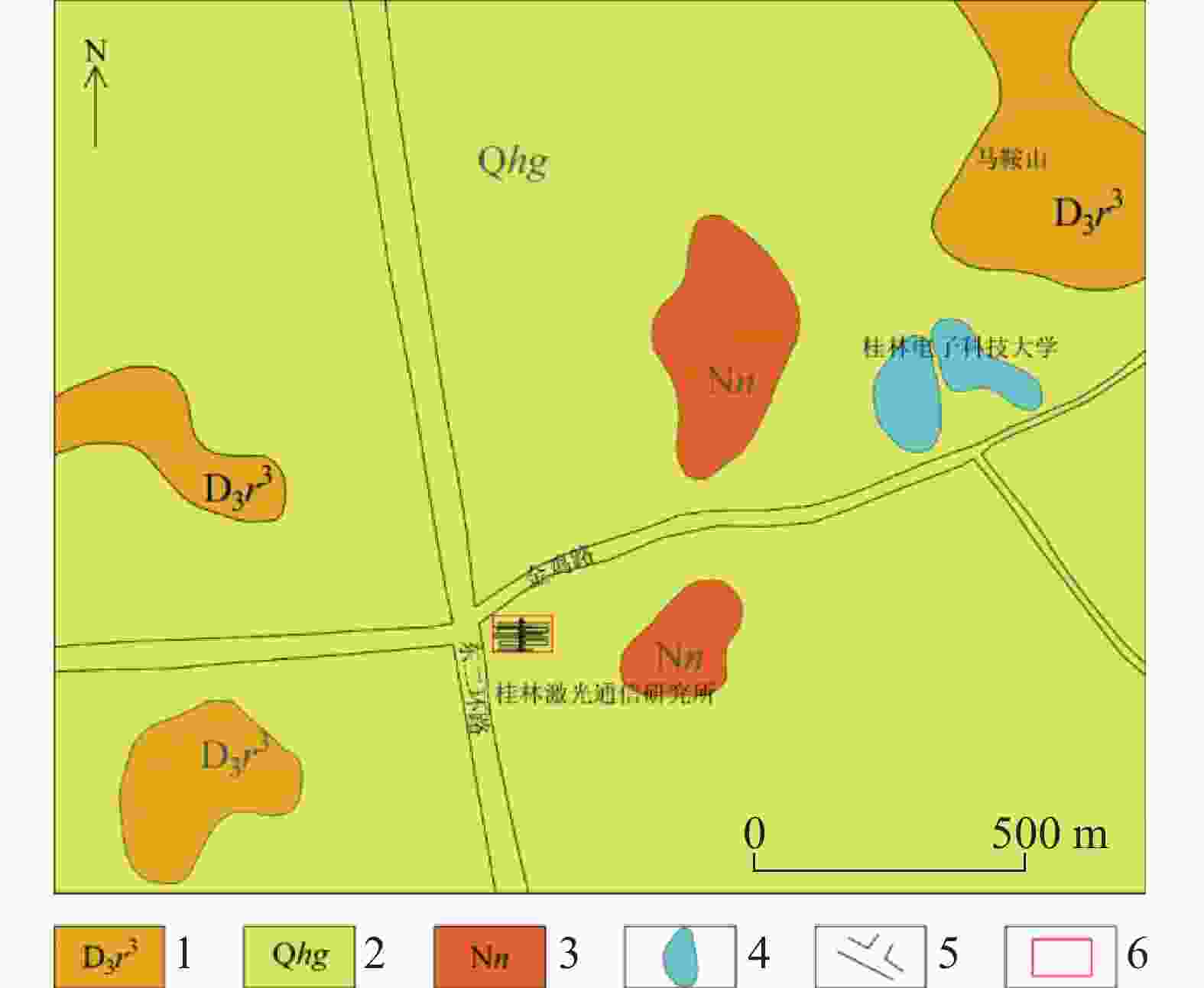
 下载:
下载:
